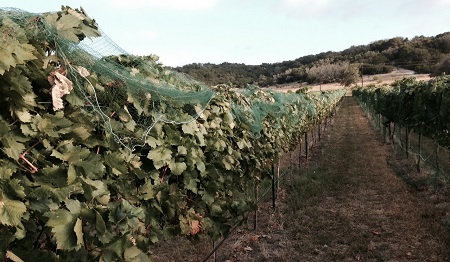Kuhlman Cellars Blog
Carignan
Carignan is a red wine grape known for producing well structured, dry red wines, yet little seems to be written 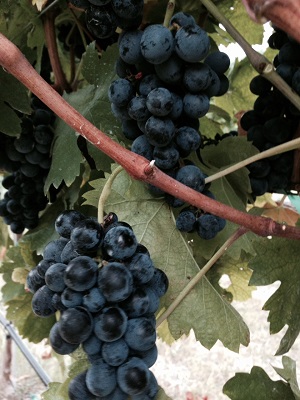 regarding this “under the radar grape”. The truth is, it has significant prominence in both the old world and new world and it is more commonly blended in everyday red wines than one might think, despite not gaining much press. Pronounced “care-in-yawn”, it is a powerful and opulent grape known for deep and concentrated color, bold tannins and high retained acidity. This is no wimpy fruit; it is structurally sound and offers tremendous presence, especially when utilized as a primary blending grape.
regarding this “under the radar grape”. The truth is, it has significant prominence in both the old world and new world and it is more commonly blended in everyday red wines than one might think, despite not gaining much press. Pronounced “care-in-yawn”, it is a powerful and opulent grape known for deep and concentrated color, bold tannins and high retained acidity. This is no wimpy fruit; it is structurally sound and offers tremendous presence, especially when utilized as a primary blending grape.
For those of you not familiar with this grape, just imagine if the well know Merlot and Syrah grapes were to mate, the best qualities of each of those varieties are similar to what Carignan showcases. The variety is presumed to be from Spain originally and is still prevalent in Catalonia, Spain. It is also well known in southern France, from the Languedoc-Roussillon region in particular. California has been growing and blending Carignan for decades and there are mature Carignan vines producing fruit in the Texas High Plains. This grape variety needs to be cultivated in relatively warm and dry climates, as it can be prone to powdery and downy mildew and requires a warm growing season to achieve proper ripeness. The vines tend to be vigorous and must be well managed to produce quality, concentrated fruit. Having said that, Texas seems like a pretty great place to grow Carignan.
At Kuhlman Cellars, we originally planted Carignan in our family experimental block in 2012. We believe this is the first planting in the Fredericksburg AVA. We also believe in its potential as a possible backbone grape for our blending family. It provides a well-balanced yet massive backbone if crop yields and vine canopy are well managed. For those of you who have tasted the 2012 Barranca, you know exactly what I mean. Wines with finesse, power and character come from these interesting blends. We also planted Carignan in our estate vineyard in the Texas Hill Country in 2015. Our largest block, Block 5, with approximately 2.3 acres of Carignan, will be producing fruit in the coming years on the Kuhlman Cellars Estate property. Our usually dry/hot summers, as well as our clay topped limestone soils in central Texas provide a suitable environment for harvests of intense, ripe fruit from our vineyards, so the future of Carignan in our wine program is exciting!
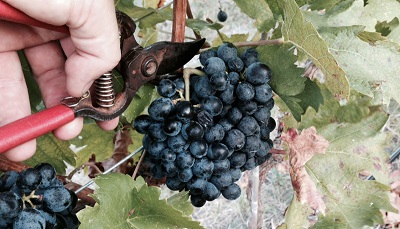
Below is a list of known Texas vineyards currently growing Carignan:
Bingham Family Vineyards- Texas High Plains
Brushy Creek Vineyards- Alvord, Texas
Buena Suerte Vineyards- Texas High Plains
Kuhlman Cellars- Texas Hill Country
La Pradera Vineyard- Texas High Plains
Martin Vineyard- Texas High Plains (believed to be the oldest Texas vines still in production)
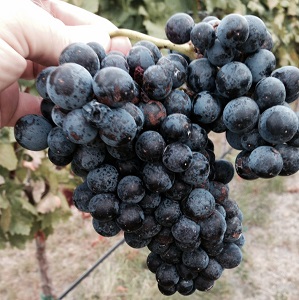
Let’s celebrate the wine life, Vina Vita, and savor everything that is… Carignan.
Cheers!
Estate Vineyard Block 2: Marsanne
For those of you who’ve recently visited the winery, you may have taken note of the new vineyard and the growing vines. With all the rain, we have a wide range of growth!
Overall at the estate, we have five different vineyard blocks ranging from just under and acre to about 2.3 acres in size. This represents 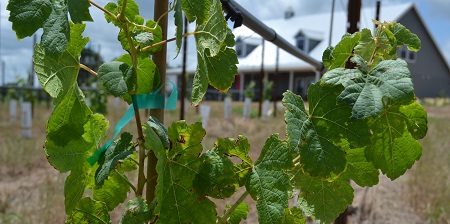
Block 2, just north of the winery building and the vineyard section you see when you first drive into the estate, is planted with Marsanne. Marsanne? This grape may be unknown to many folks, but we believe it holds good promise as we continue seeking the best varieties for our climate and soil.
So, what is Marsanne?
Marsanne is a white grape, thought to have originated near the town of Marsanne, France, located in the northern Rhone valley. While the name may not be familiar, white wines from Hermitage, St. Joseph, Crozes-Hermitage and St-Peray are often predominately Marsanne blends. In fact, Marsanne is the most widely planted white grape variety in the northern Rhone. Marsanne is also found in the southern Rhone valley, where it can be found in white Cotes du Rhone wines.
Interestingly enough, Austrailia has the most Marsanne vines in the world, accounting for about 80% of the worldwide total. Marsanne was brought there in the 1860’s and the oldest Marsanne vines in the world are found there dating back to about 1927.
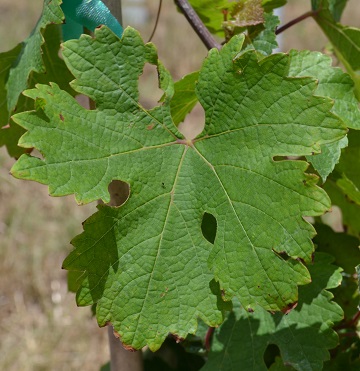 There isn’t much Marsanne yet growing in Texas. A couple of growers up in the High Plains are growing it, including VJ Reddy and Tyler Oswald. Mike McHenry has a block of Marsanne up near San Saba.
There isn’t much Marsanne yet growing in Texas. A couple of growers up in the High Plains are growing it, including VJ Reddy and Tyler Oswald. Mike McHenry has a block of Marsanne up near San Saba.
Marsanne in the Vineyard
We selected Marsanne for our estate vineyard because of the expected viticulture characteristics. It tends to bud late in the spring, typically about 11 days later than Viognier, which is important when we are dealing with spring frost events. It also tends to have less disease issues, partly due to the looser grape clusters which promotes better air circulation. It also produces wines of great character and structure, something we like when considering blending with our other white grape planted in Block 4 (and sister vine to Marsanne) – Roussanne.
So far at the estate, the vines are growing well in our clay-dominated soil over a limestone base. The rain so far has allowed the vines to grow without supplemental irrigation, a rare treat here in Texas. However, the high rainfall we’ve had this spring is causing its own challenges with standing water and disease pressure. Of course, we won’t get any fruit from these vines this year, though we might get a small sample in 2016. Look for a true harvest in 2017 with wine released perhaps in 2018.
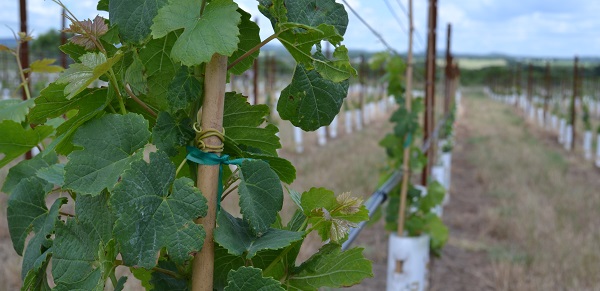
Also, feel free to come on out and walk the vineyards and look at these wonderful vines!
Texas Terroir, a brief synopsis
There are so many factors involved in producing a quality bottle of wine, as things all begin in the vineyard and make their way to the cellar. Most of us can certainly agree, weather and soil play a very important role in winemaking. What better place to discuss soil types than in the Lone Star State. Texas itself sits on a rock shelf and depending on where you live in our wonderfully enormous state, you either have a little or a whole lot of rocks in your backyard. There is a reason most central Texans construct raised gardens, it is because you can literally bend a pick axe trying to dig into the limestone and caliche. Who wants to rent a Bobcat just to plant tomatoes?
Let’s talk a little about the two largest AVA’s in Texas, and how different the soils can really be. Understand this story is not a definitive- end all lecture about the structure of Texas dirt, merely a brief explanation of some of the key differences between the soil of Central Texas, vs that of the Texas High Plains. With such a large wine style dynamic between fruit from the Hill Country vs the High Plains, there has to be something unique regarding each region right? The answer is yes, both in climate and dirt, this thing we call terroir. What is terroir exactly? Simply put, it is the all-encompassing word for wind, rain, temperature, soil, elevation, etc, of a given region. Here are some interesting facts on the two prominent regions we are discussing.
Texas Hill Country AVA:
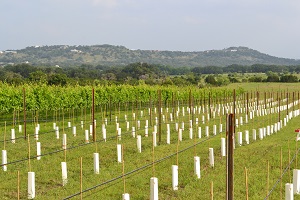
Impressively the second largest AVA in the United States, it covers 9,000,000 acres (14,063 square miles) and contains 2 sub regions; Bell Mountain AVA and Fredericksburg AVA. Elevation can range from roughly 1,000 ft MSL to over 2,500 ft MSL. The weather in central Texas is typically hot during the growing season. Hill Country daily high temperatures average in the in the mid 90’s, while the nights drop into the low 70’s. The soils vary in this region, but limestone and caliche reign. For example, the Kuhlman Cellars Estate Vineyard sits on a bedrock of Caliche with a clay topsoil. There are spots in the vineyard where the clay is only a few inches deep, you can ask our vineyard team. I cannot tell you how many vines we placed directly on white chalky rock when we planted the estate vineyard in April, 2015. It is basically “set the roots on rock, replace the soil, and wish it good luck”. Struggle little fella, struggle! The rocky terroir of central Texas is typically well draining, though the clay can cause all sorts of issues since it retains moisture. The caliche provides good mineral component to the wines made from these vineyards.
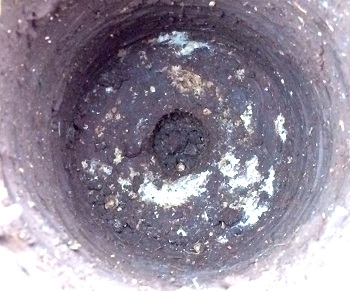
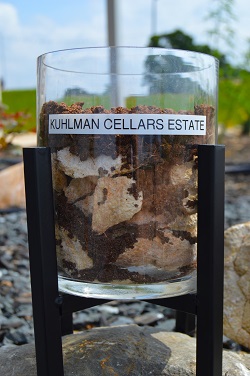
Texas High Plains AVA:
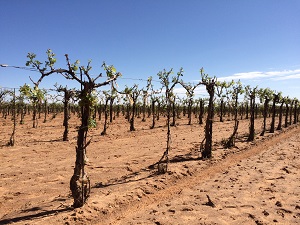
This is the second largest AVA in Texas and it also contains the most vines. It’s estimated, west Texas grows 90% of the fruit grown in the state, especially in the Brownfield/ Lubbock area. The Texas High Plains is far different from the Hill Country in a few ways, the elevation is significantly higher allowing for more of that much needed diurnal shift. Elevation in this region ranges from around 2,500 ft MSL to over 3,700 ft MSL. The soil is mainly composed of red dirt/sand with loam as well. There is quite a bit of rock in Lubbock, but it is typically buried under several feet of the famous red dirt. Sand is very well draining soil. Humidity levels here are typically very low, making the region ideal for grape growing, by reducing the incidence of fungus and molds.
In terms of temperature, the high plains tends to be slightly cooler during the days and the nights cool off into the mid to upper 60’s, providing a larger diurnal shift which helps the grapes rest and recover overnight.
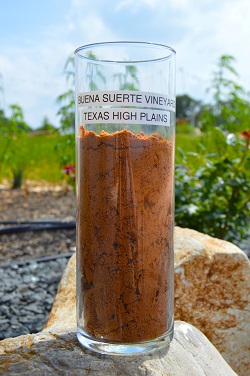
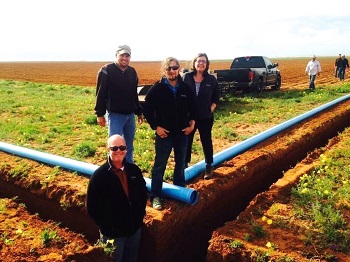
All in all Texas is a diverse place to grow grapes and to make fine wines. I hope this brief synopsis helps you to understand a bit more about our local industry and what makes our two biggest AVA’s so unique, fun and interesting.
